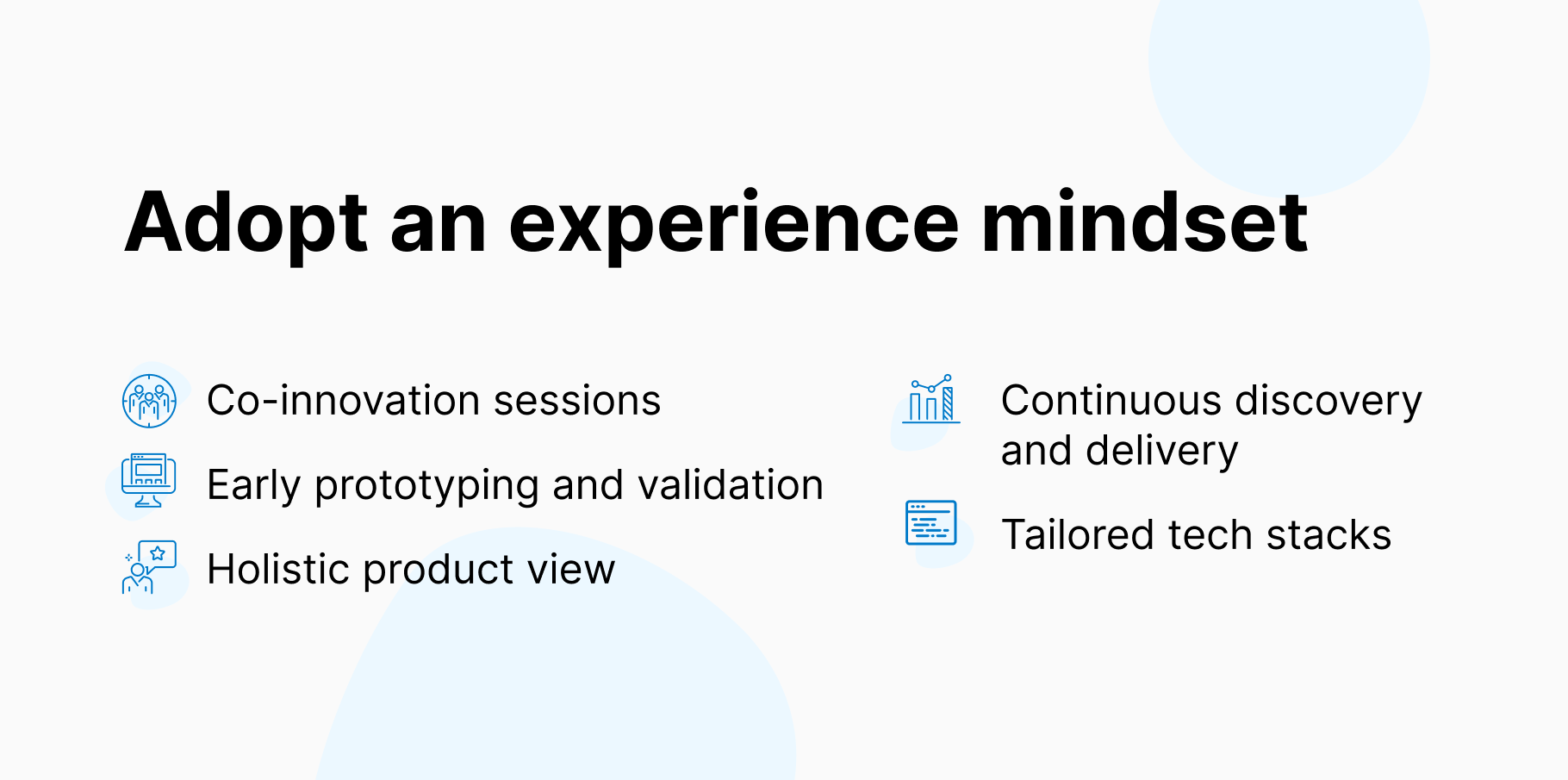//6 min
Retail competition is bigger than ever. Being customer-centric on every touchpoint has become the make-or-break factor for commerce players – will you bring your customers a truly holistic shopping experience?
In an era of digitization and automation of commerce, boosted by the pandemic, B2C and D2C companies find themselves in a tight spot: Competition is growing, and new players easily carve out market segments with highly tailored offerings, mono-brand shops, and data-driven design.
The pressure is on big platform players to keep up with shifting user demands – smartphones have long outnumbered other devices in sales and conversions. Even in conservative markets like Germany, mobile has become the dominant channel. And with their personal device, users demand a personal experience. The best experience.
Mobile First Is Only the Beginning
Mobile is the most critical touchpoint for anyone who wants to interact directly with customers. Start-ups understand this and often focus exclusively on mobile shopping. However, B2C companies and companies rooted in e-commerce can be stuck on the web-only paradigm, treating mobile as an afterthought. This results in a half-hearted mobile experience:
“Clunky” websites, responsive but not optimized for mobile
No apps available, or worse, half-hearted apps with random features
Mobile sites and apps that haven’t been updated in years
The question is not whether you should employ a mobile-first approach. The question is rather how you can use your existing infrastructure to deliver the best possible (mobile) experience. Since your customers shop on websites, web apps, and native apps, we suggest using the web for growth and apps for retention. Both channels need to fit their purpose and context.
We have put together three tips on how you can achieve a better fitting mobile experience:
Native mobile apps provide the best experience – a must for omnichannel players. Swift and Kotlin are modern programming languages that are ideal for this task
Cross-platform apps are perfect to upgrade your website experience – the open-source framework Flutter combines quick adaptions with the benefits of native UX
Responsive web frontends should be optimized for WebVitals/SEO to grow and be personalized to buyer preferences
The Holistic Shopping Experience
Independent of the channel, location, or device, customers are getting used to highly tailored experiences. As the market fills with more players offering similar products, B2C/D2C players are differentiating themselves through their user experience: How easy is it to find exactly what I am looking for? Does it fit my style? Is it quick and easy to order, and does it arrive quickly? These questions are becoming the key to winning and retaining customers – with a holistic shopping experience.
For customers, a holistic shopping experience consists of contextual, personalized, easily digestible content that follows the user from channel to channel, regardless of location or device.
For employees, a holistic shopping experience means the ability to work easily with and for customers, from start to finish – with a great CMS and self-service features that make shop maintenance and customer support a breeze.
For companies, creating a shopping experience has to be holistic as well: From discovery to delivery, from strategy to testing and optimizing, the process needs to be product-focused, user-centric, and data-driven.

The Experience Mindset
An excellent shopping experience used to be a plus. What used to matter was the price and whether you could deliver the product as needed. Today, every commerce player offers a competitive price, and every D2C company delivers as fast as possible. Today, the shopping experience is what separates you from the competition.
Bound by Old Structures
Companies struggling to provide a better shopping experience often find themselves dealing with various problems:
They follow a legacy IT mindset focusing on internal challenges, not on customer needs
Scope and strategy are defined by shareholders, not by people who know the users
Structures and processes are trapped in a siloed architecture
Waterfall setups are typical, even if developers work in agile sprints
How to Achieve the Experience Mindset
The key to delivering an outstanding experience lies in adopting an experience mindset: Rather than internal structures, silos, and processes, the experience mindset focuses on people. It removes development silos and empowers product teams to design, develop, and deliver the best experience all the time. Here are a few tips for implementing the experience mindset:
Explore customer-centric opportunities with co-innovation sessions
Unite discovery and delivery of features and products with a dual-track agile process
Combine lead product managers, designers, and developers in a powerful “trio approach” to ensure a holistic product view and smooth handoffs
Build the right solution with early prototyping and validation to understand all contexts
Research continuously and use tailored best-of-breed tech stacks and collaborative scoping for successful MVP launches and steady iterations
With the right mindset – focused on product-driven experience – and a headless mobile-first approach, you can achieve a holistic shopping experience for your customers. And be one step ahead of your competition.
You can learn more about the process and get more practical tips in our whitepaper “Holistic Shopping Experience – How Commerce Players can Optimize Business, Technology, and User Experience With the Right Mindset”